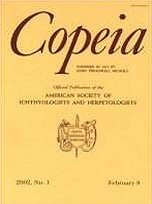A cladistic analysis of the gobiid fish genus Gobionellus primarily using characters of the postcranial axial skeleton and the cephalic lateralis system gave evidence that the genus as historically conceived is polyphyletic. Its present recognition relies upon characters common to many species of gobionelline gobies. One group of six species is most closely related to the genus Gobioides. This group includes Gobionellus oceanicus and retains the name Gobionellus. Gobionellus is diagnosed by an extensive oculoscapular canal running from the snout to above the rear margin of the operculum with a unique A‘BCDFHKL’ pore pattern, a distally flared fourth neural spine that is spatulate in five of the six species, a vertical row of neuromasts on the rear field of the operculum, and elongate gill rakers on the anterior surface and lobes on the posterior surface of the epibranchial of the first gill arch. No unequivocal synapomorphies are offered for the genus excluding Gobioides. Fifteen species previously assigned to Gobionellus are more closely related to species in the genera Oxyurichthys, Oligolepis, and Evorthodus. These species are removed to the resurrected genus Ctenogobius of which Ctenogobius fasciatus is the type species. Ctenogobius is diagnosed by an abbreviated oculoscapular canal that terminates above the preoperculum with an A‘BCDFH’ pattern, a simple or triangulate fourth neural spine, a diagonal posterior opercular neuromast row, and a lack of lobes or gill rakers on the anterior surface of the first epibranchial. The lack of lobes or gill rakers on the anterior surface of the first epibranchial is synapomorphic for the genus. One species originally placed in Gobionellus, Oxyurichthys stigmalophius, exhibits two synapomorphies diagnostic of Oxyurichthys—a transversely bifid third neural spine and no preopercular canal. It also shares other derived features found in most species of Oxyurichthys—a rounded margin on the tongue, a membranous crest on the nape, a shortened palatine bone, and a single row of teeth in the upper jaw. Putative synapomorphies of the gobionelline genera Evorthodus, Gobioides, Oligolepis, and Stenogobius are discussed.
How to translate text using browser tools
1 May 2004
Phylogenetic Analysis of the Genus Gobionellus (Teleostei: Gobiidae)
Frank Pezold
ACCESS THE FULL ARTICLE





